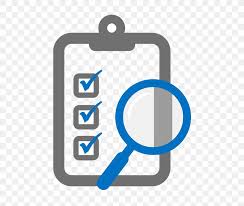15 Ways to Optimize Your Website's Navigation for Better User Experience

Updated at: 2023-07-04 16:12:51 (1 year ago by Melkisedeck Leon Shine)
15 Ways to Optimize Your Website's Navigation for Better User Experience 🚀
Effective website navigation is crucial for providing a seamless and enjoyable user experience. A well-structured and intuitive navigation system can make it easier for visitors to find what they're looking for and encourage them to explore more of your website. Here are 15 practical ways to optimize your website's navigation and enhance user experience:
1️⃣ Keep it simple and straightforward: Simplicity is key when it comes to navigation. Stick to a clear and concise menu structure that is easy to understand and navigate.
2️⃣ Use descriptive labels: Make sure your menu labels accurately reflect the content they lead to. Avoid vague or generic terms that could confuse visitors.
3️⃣ Prioritize important pages: Place your most critical pages, such as your homepage or product/service pages, prominently in your navigation menu.
4️⃣ Implement drop-down menus: When you have multiple subcategories or pages within a category, use drop-down menus to organize and display them in a hierarchical manner.
5️⃣ Include a search bar: A search bar can be a lifesaver for users who want to find something specific. Make it easily accessible and place it prominently on your website.
6️⃣ Utilize breadcrumb navigation: Breadcrumbs provide users with a clear trail of their navigation path, making it easier for them to backtrack or explore related content.
7️⃣ Optimize for mobile: With the increasing use of mobile devices, ensure your navigation is responsive and mobile-friendly. Consider using a hamburger menu icon for a compact mobile navigation experience.
8️⃣ Use visual cues: Incorporate visual elements like arrows or icons to guide users and indicate clickable elements.
9️⃣ Provide consistent navigation: Keep your navigation menu consistent across all pages to avoid confusion and maintain a cohesive user experience.
🔟 Include a sticky/fixed navigation bar: A sticky navigation bar that stays visible as users scroll can enhance accessibility and provide easy access to important sections.
1️⃣1️⃣ Highlight active pages: Visually indicate the current page or section within your navigation menu to help users orient themselves and understand where they are in your website's hierarchy.
1️⃣2️⃣ Opt for a logical menu structure: Arrange your menu items in a logical order that aligns with user expectations and the content flow of your website.
1️⃣3️⃣ Add a "Back to Top" button: For longer pages, adding a "Back to Top" button can save users from endless scrolling and improve navigation efficiency.
1️⃣4️⃣ Minimize the number of clicks: Reduce the number of clicks required to reach important content by making it easily accessible from your main navigation menu.
1️⃣5️⃣ Test and analyze: Continuously monitor user behavior, conduct A/B testing, and analyze user feedback to identify areas for improvement and optimize your website's navigation accordingly.
By implementing these optimization techniques, you can create a user-friendly website navigation system that allows visitors to effortlessly navigate your site, find what they need, and have a positive overall experience. Remember, a well-optimized navigation not only enhances user experience but also contributes to higher engagement and conversions.





